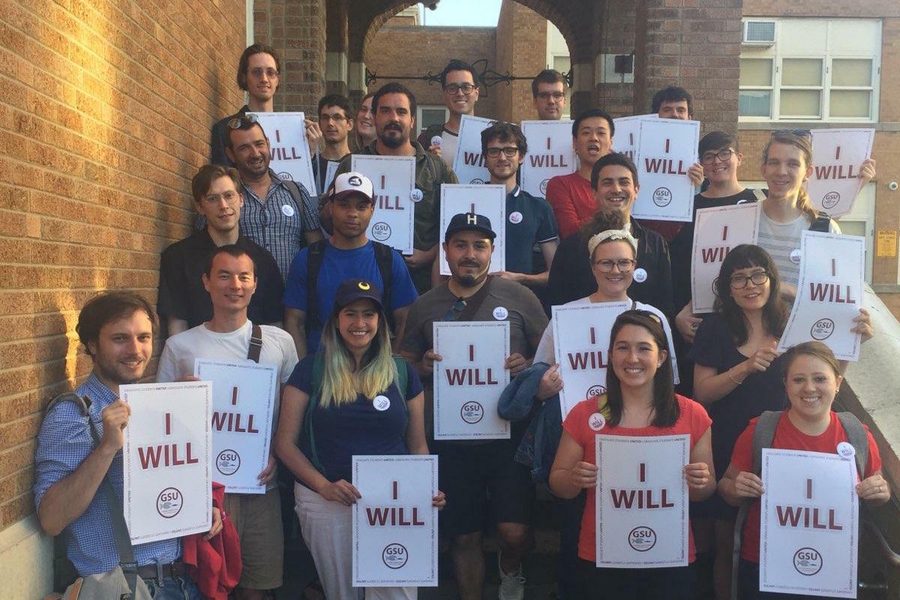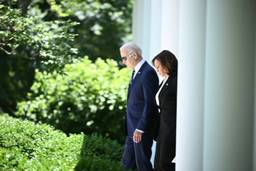
At universities across the country, graduate student workers perform essential labor. We teach classes, grade exams and assignments, tutor and mentor undergraduates, maintain labs, and perform clerical duties. Some 66,000 graduate employees at over 30 universities in the United States are currently represented by unions and protected through collective bargaining agreements, because public-sector labor laws in many states recognize the obvious — we are workers.
In August 2016, the National Labor Relations Board (NLRB) issued a landmark decision recognizing that graduate employees at private universities — who do the same labor as their counterparts at public universities — are also workers, and therefore also have collective bargaining rights. Since then, private universities have seen an explosion of graduate worker organizing. At least nine now have recognized grad unions, and five of those already have union contracts in place.
But now President Trump is trying to permanently reverse the 2016 decision. His anti-union appointees who control the National Labor Relations Board declared on September 20 that graduate workers at private institutions are not workers at all, but only “students,” and therefore have no right to union representation or collective bargaining. Traditionally, the NLRB settles questions of labor law through case-by-case decisions, but this time it’s exercising its rarely used rulemaking authority to set a definitive policy.
Before the rule can be implemented, there is a 60-day public comment period, which opened on September 23. The unions representing grad workers at private universities — including AFT, SEIU, UAW and UNITE HERE — are teaming up by calling on all graduate workers and allies to submit a public comment to the NLRB expressing opposition to the proposed rule. Their goal is to get 30,000 comments. With enough public pressure, the unions hope to stop — or at least delay — the new rule.
“We’re looking at having flyers, petitions, delegations, rallies, and of course commenting guidelines, to engage as many folks as possible,” says Yiran Zhang a Ph.D. student in philosophy at Loyola University Chicago.
Zhang is co-chair of the SEIU-affiliated Loyola Graduate Workers’ Union, which the university has refused to recognize or bargain with despite a majority of graduate employees voting to unionize in February 2017. The administration has also faced multiple protests, including a civil disobedience action and one-day walkout this past spring.
“This is a crossroads for Loyola,” Zhang explains. “They must either publicly show they stand on the side of workers who are increasingly coming under attack by bargaining with us, or they will show once again that they eschew their professed social justice values to simply hide behind Trump’s anti-labor policies.”
Nationally, graduate employees have taken on increasingly heavy teaching workloads in recent years while making poverty wages and receiving few benefits. Between 2005 and 2015, the number of graduate workers employed by universities increased by 16.7 percent, while the number of tenured and tenure-track faculty rose by only 4.8 percent. Meanwhile, executive compensation at private universities has sharply increased, with the presidents of 61 private universities now making over $1 million every year.
The argument that graduate employees are not “real” workers is as old as it is absurd. It’s not an invention of Trump’s NLRB, but of university administrators who are determined to profit off of the exploited labor of their grad workers, and don’t want unions to get in the way.
This year marks the 50th anniversary of when the Teaching Assistants’ Association at the University of Wisconsin-Madison became the first recognized graduate worker union in the country. Since then, graduate workers at dozens of other public institutions — where labor relations are governed by state laws instead of the NLRB — have won union recognition.
Almost every time, administrators fought tooth and nail to prevent unionization by trotting out the same line that grad workers are more “students” than “employees.” That’s because, once they’re required to negotiate with grad unions, administrators are eventually forced to guarantee higher wages, better healthcare, tuition and fee waivers, grievance procedures, protections against discrimination and other rights through union contracts.
After half a century, it should be obvious that the “students not workers” argument is nothing more than anti-union propaganda. In reality, there’s no question that graduate workers are indeed workers who can and should have collective bargaining rights.
While universities claim to be dedicated to the pursuit of knowledge and truth, administrators hate unions so much they are now allying themselves with the most anti-intellectual and mendacious president in history. Perhaps it’s no surprise that the same institutions that often cover up campus sexual assault and readily roll out the welcome mat for white supremacists have found common cause with the racist sexual predator who occupies the White House.
For all the talk from universities of fostering collegial dialogue and debate, administrators are afraid to sit down at the bargaining table and negotiate with their own workers. For all the talk of promoting critical thinking, they cling to lazy union-busting talking points. For all the talk of commitment to diversity and democracy, they do everything possible to prevent their graduate student workers from having an independent voice.
If campus administrators and Trump’s NLRB insist that graduate workers at private institutions really aren’t workers, then perhaps they should all decide to collectively stop working — and see just how long the universities can function without their labor.
Jeff Schuhrke is a labor historian and assistant professor at the Harry Van Arsdale Jr. School of Labor Studies, SUNY Empire State University. He is the author of Blue-Collar Empire: The Untold Story of US Labor’s Global Anticommunist Crusade.







